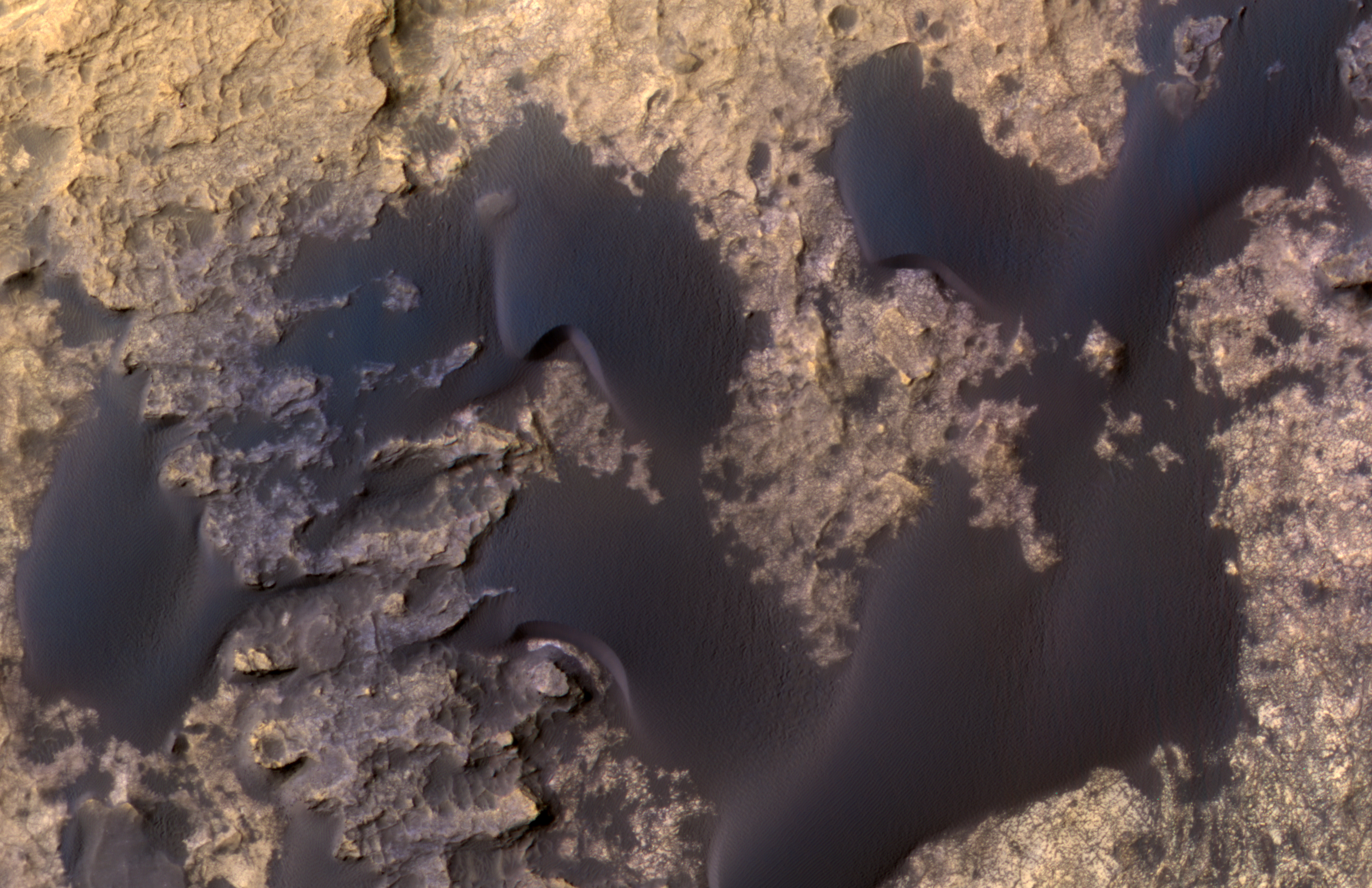Curiosity, recovering from the Bagnold dunes campaign

The bowl of windstuff
April 24, 2017
Sand tails
May 8, 2017
A Piece of Mars: You’ll probably want to click on this image to see the whole thing, it’s pretty big, and it’s worth seeing. This 850×550 m (0.53×0.34 mi) scene shows the barchanoid dunes of the Bagnold dune field, imperceptibly crawling southwestward (to the lower left). This is the site where the Curiosity rover first encountered an active dune in its trek through Gale crater. This image was taken after the rover’s intensive field campaign of the two dunes in the upper middle of the frame – the rover is in fact in this frame (extra credit if you can find it!), but it’s backed off a bit from the dunes, and it’s sitting on some old sandstone (that we now know was also once a dune field, long ago, much like some of the sandstones we find on Earth). This image was taken in March 2016; the rover has since moved on and across the dune field, and is slowly working its way through the foothills of Mount Sharp.
I chose this image in tribute to a colleague who unexpectedly passed away last week. He worked on both the HiRISE and Curiosity teams, so it’s fitting to show both here, near the dunes that he studied. He’s best known for his work on dune migration and surface erosion on Mars. He also mapped and measured wind-carved stones called ventifacts (we have those on Earth too), and discovered that the ventifacts here in Gale crater were carved (probably long ago) by a wind blowing from the southwest, which is opposite the direction that the dunes are being blown today! There must have been quite a remarkable shift in wind patterns since those stones were carved, and it remains a mystery. Our dear colleague will be greatly missed.
(HiRISE ESP_045293_1755, NASA/JPL/Univ. of Arizona)




4 Comments
I stumbled upon your page. I would appreciate it if you could confirm that Bagnold Dune was all formed by wind. Could a part of it have been formed by water?
The Bagnold dunes are all windblown. They’re fairly young as far as Mars geology goes, probably a few thousand years old at the most. The water-lain rocks on Mars are mostly >3.5 billion years old.
As amazing as is this photo, and the thoughts it conjures, I cannot help but wonder. . . What is the name of the colleague who passed? I can’t stop thinking about how someone like that dedicates their lives to such cosmic pursuits, yet so few of us are aware of their existence, or, as in this case, even their name.
P.S.
I’d like my extra credit in cash, please. ^_^
Thanks for asking. 🙂 The colleague who passed was Nathan Bridges, an aeolian scientist working at the Johns Hopkins University Applied Physics Lab (what we just call APL). I worked with Nathan a little bit – we were coauthors on a few papers. He was lucky enough to be involved in both orbital and landed Mars missions, and he essentially did what I would have done, had I been in his place on those missions (using the returned data to get a first look at dunes and surface erosion). Nathan was a very friendly guy, always willing to sit down and talk about anything. He was very generous with sharing data and ideas. I was the first to notice in HiRISE images that the dunes and ripples were actively migrating (at the time the community had thought they were inactive in the present climate), and I hired a postdoc to investigate them. I think Nathan figured out the dunes and ripples were moving around the same time, or maybe a little later (he was on the HiRISE team and had first look at those images), but rather than get upset that we’d “scooped” him, he worked with us to make sure the camera targeted the dunes (and then he went on to expand on our work). I’m forever grateful to scientists who put the science first, as it helps out the entire community and allows more and better science to get done.
You can read more about him here.